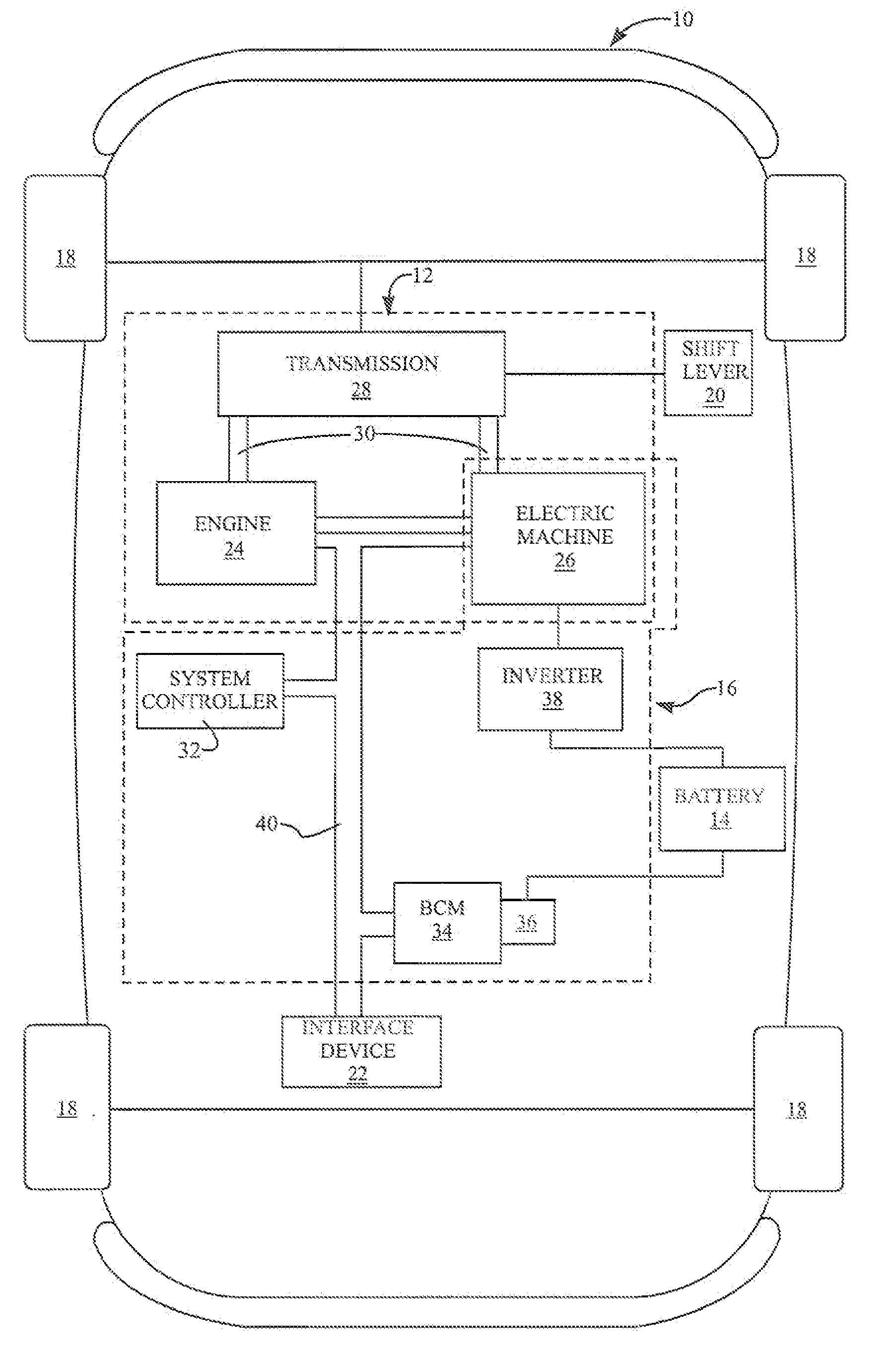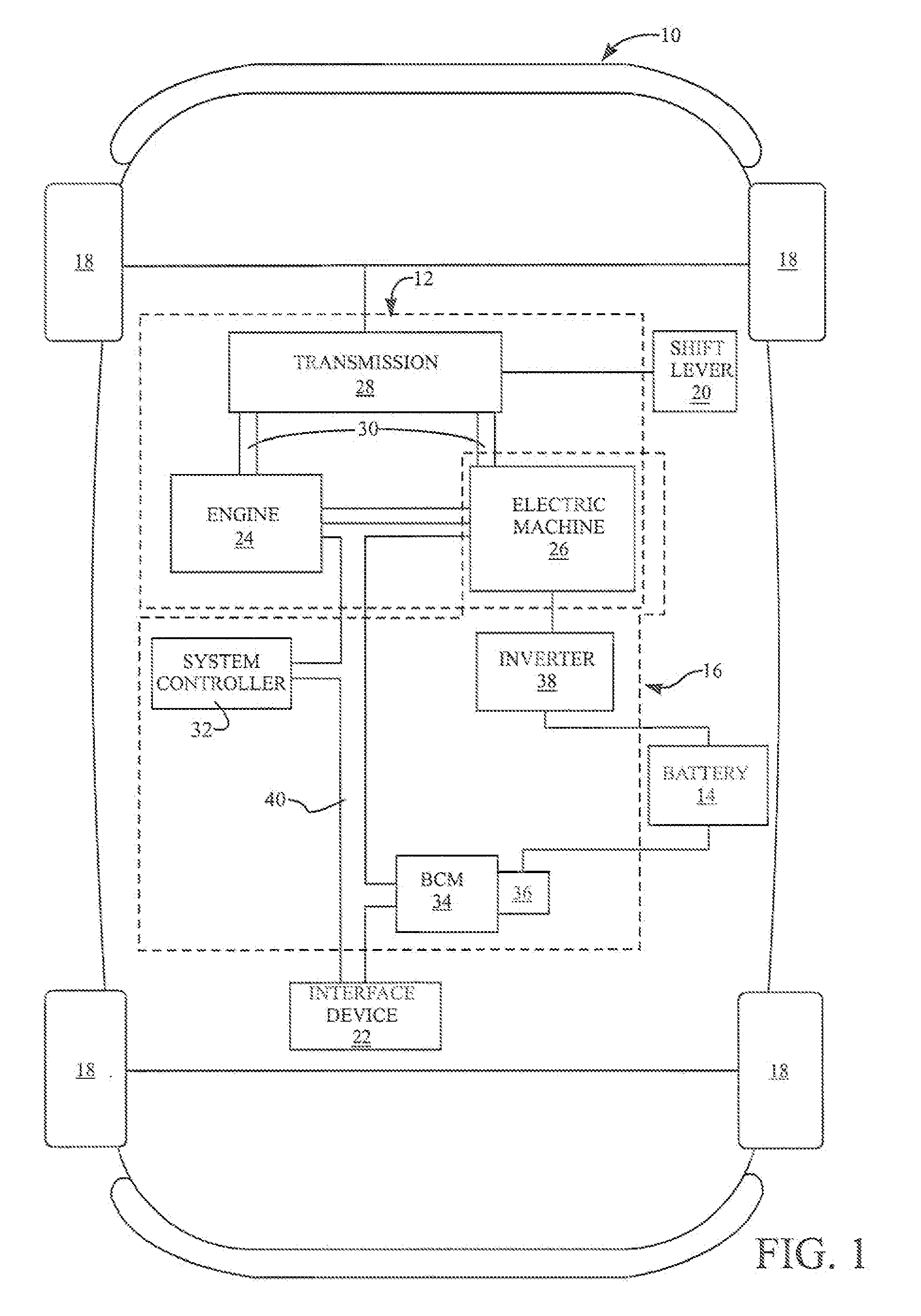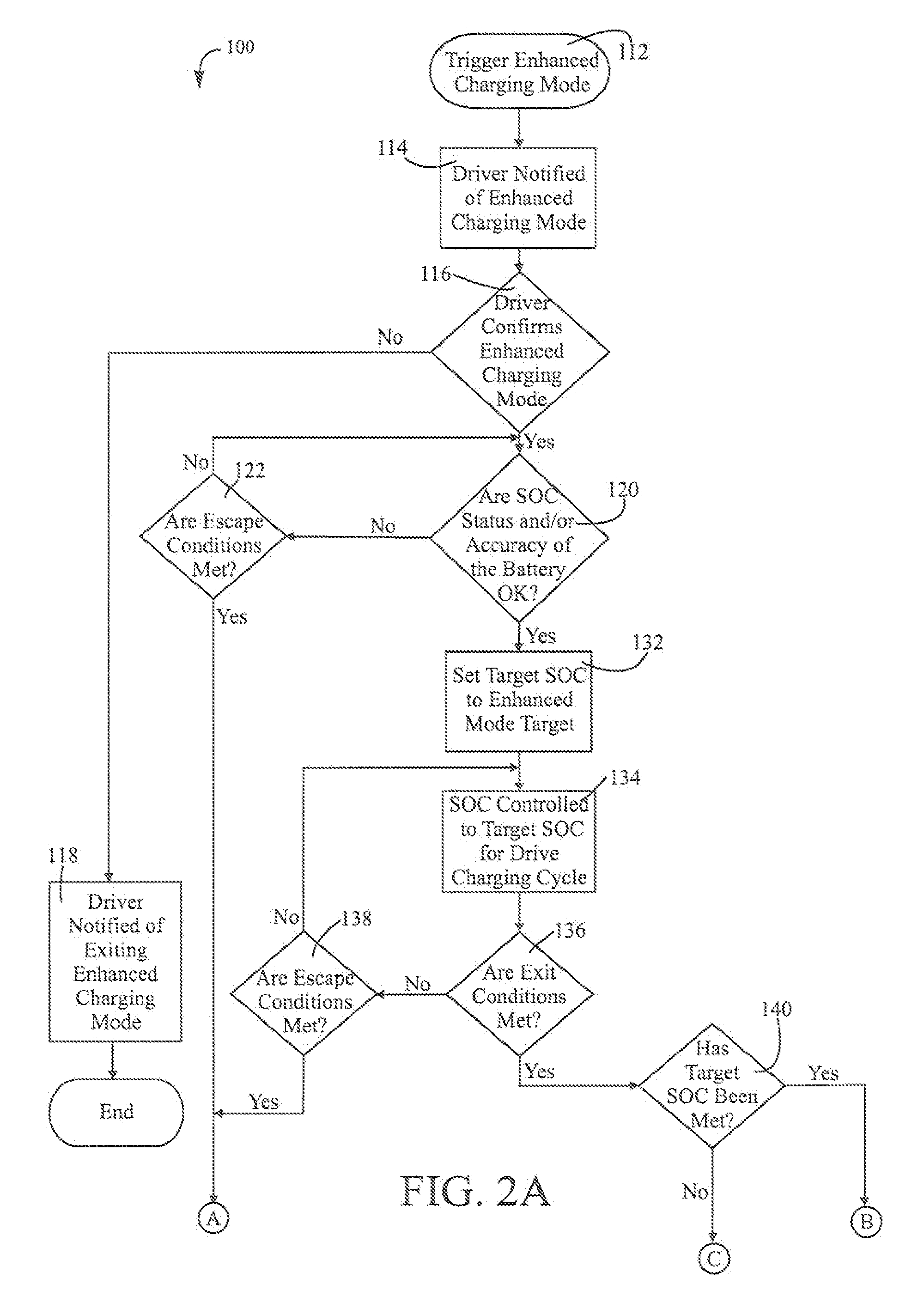Controlling state of charge of a vehicle battery
a technology for controlling the state of charge of a vehicle battery, which is applied in the direction of battery/fuel cell control arrangement, secondary cell servicing/maintenance, instruments, etc., can solve the problems of battery to remain idle, battery to lose its charge, and reach a state of charge too low to start the vehicl
- Summary
- Abstract
- Description
- Claims
- Application Information
AI Technical Summary
Benefits of technology
Problems solved by technology
Method used
Image
Examples
Embodiment Construction
[0009]Referring in more detail to the drawings, FIG. 1 illustrates a vehicle 10, such as a hybrid electric vehicle. The vehicle 10 includes a powertrain system 12 for propelling the vehicle 10, a battery 14 for providing power to the powertrain system, and a charging system 16 to charge the battery. The vehicle 10 also includes wheels 18 driven by the powertrain system 12, a shift lever 20 to enable a driver to interface with the powertrain system, and an interface device 22 to enable a driver to interface with the charging system 16.
[0010]The powertrain system 12 generates mechanical power to drive the vehicle wheels 18. The powertrain system 12 includes a transmission 28 mechanically coupled to the wheels 18 in any suitable manner for providing a mechanical advantage, an internal combustion engine 24 to power the transmission, an electric machine 26 also for powering the transmission and of charging the battery 14, and a drive train 30 for connecting the engine and the electric ma...
PUM
| Property | Measurement | Unit |
|---|---|---|
| state of charge | aaaaa | aaaaa |
| frequency | aaaaa | aaaaa |
| temperature | aaaaa | aaaaa |
Abstract
Description
Claims
Application Information
 Login to View More
Login to View More - R&D
- Intellectual Property
- Life Sciences
- Materials
- Tech Scout
- Unparalleled Data Quality
- Higher Quality Content
- 60% Fewer Hallucinations
Browse by: Latest US Patents, China's latest patents, Technical Efficacy Thesaurus, Application Domain, Technology Topic, Popular Technical Reports.
© 2025 PatSnap. All rights reserved.Legal|Privacy policy|Modern Slavery Act Transparency Statement|Sitemap|About US| Contact US: help@patsnap.com



